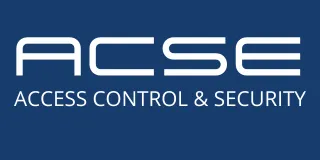
Security Risks in Automated Gates: How to Protect Against Cyber and Physical Threats
Automated gate systems are an essential component of modern security infrastructure, providing controlled access, convenience, and enhanced property protection for residential, commercial, and industrial properties. However, as these systems become more advanced and connected to digital networks, they also become more vulnerable to cyber threats, physical security breaches, and operational failures.
This article explores the most common security risks associated with automated gates and provides best practices to mitigate both cyber and physical threats, ensuring that your gate system remains a reliable first line of defense.
Understanding Security Risks in Automated Gate Systems
An automated gate is only as secure as its weakest link. Threats can come from both digital and physical vulnerabilities, compromising the safety and reliability of the system.
1. Cybersecurity Threats: How Hackers Target Automated Gates
With the integration of Wi-Fi, Bluetooth, and cloud-based access control, cybercriminals now have more entry points to exploit automated gate systems. The most common cyber threats include:
Unauthorized Remote Access – Hackers can exploit weak passwords or unencrypted connections to gain control over gate systems remotely.
Signal Interception & Replay Attacks – Attackers can capture radio frequency (RF) signals from remote controls and replay them to force gates open.
Software Vulnerabilities & Outdated Firmware – Failing to update the system can leave backdoors open for hackers to exploit.
Brute Force Attacks on Access Control Panels – Systems with weak security credentials can be easily breached by attackers using trial-and-error techniques.
How to Prevent Cyber Attacks on Automated Gates
Use Strong Encryption & Secure Communication – Ensure that Wi-Fi, RF, and Bluetooth signals are encrypted to prevent interception.
Implement Multi-Factor Authentication (MFA) – Require two-step authentication for access control systems to prevent unauthorized use.
Regular Firmware & Software Updates – Keep all smart gate systems, intercoms, and access control devices updated to fix security vulnerabilities.
Restrict Remote Access – Disable default login credentials and configure firewall rules to allow only authorized users.
2. Physical Security Risks: How Intruders Bypass Automated Gates
While cyber threats are growing, physical security breaches remain a primary concern. Automated gates, if not properly secured, can be forced open, tampered with, or bypassed by intruders. Common vulnerabilities include:
Manual Release Lever Exploits – Many automated gates feature manual release levers that can be easily accessed by intruders.
Weak Gate Structures & Poor Installation – Gates made from low-grade materials or installed improperly can be forced open.
Lack of Surveillance & Lighting – Gates without CCTV cameras, motion sensors, or adequate lighting create blind spots for intruders.
Tailgating & Unauthorized Entry – Vehicles or pedestrians following closely behind authorized users can bypass the system undetected.
How to Enhance Physical Security for Automated Gates
Secure the Manual Release Mechanism – Use locking covers or hidden release systems to prevent external tampering.
Reinforce the Gate Structure – Invest in high-strength steel, reinforced frames, and anti-cut materials to withstand break-in attempts.
Install Surveillance & Access Control Integration – Use CCTV cameras, motion detection alarms, and smart lighting for better security monitoring.
Implement Anti-Tailgating Measures – Configure access control delays, barriers, or secondary gates to prevent unauthorized follow-through.
Best Practices for Securing Automated Gate Systems
To effectively protect against cyber and physical security threats, property owners, facility managers, and security professionals should follow these best practices:
1. Conduct Regular Security Audits
Perform quarterly inspections to identify vulnerabilities in hardware, software, and security protocols.
Simulate intrusion scenarios to test how well the gate system resists cyber and physical breaches.
2. Implement Redundant Security Layers
Use a combination of cybersecurity, physical barriers, and surveillance to create a multi-layered defense.
Integrate smart access control, alarm triggers, and real-time monitoring to enhance response times.
3. Restrict & Monitor Access Control Privileges
Only authorized personnel should have administrative access to smart gate systems.
Set up access logs and alerts to track who opens or closes the gate and when.
4. Secure Power & Network Connections
Install backup power sources like battery backups or generators to prevent downtime during power failures.
Use VPNs and encrypted networks for secure remote access management.
Future Trends in Secure Automated Gate Systems
As security threats evolve, so do technologies that strengthen gate automation security. The following advancements will shape the future of smart, secure access control:
Artificial Intelligence in Access Control – AI-powered cameras and access control systems detect suspicious activity and prevent unauthorized access.
Blockchain-Based Security Authentication – Decentralized credential storage will enhance identity verification and prevent hacking attempts.
Biometric & Behavioral Access Control – Systems will analyze walking patterns, voice recognition, and thermal imaging for advanced security measures.
Final Thoughts: Ensuring Robust Security for Automated Gates
Automated gates serve as a critical security layer for properties, but they must be properly secured against both cyber and physical threats.
Implement strong encryption, authentication, and regular software updates to prevent cyber attacks.
Strengthen gate structures, surveillance, and anti-tailgating measures to prevent physical breaches.
Conduct routine security assessments and integrate smart technologies for long-term protection.
By adopting advanced security strategies, property owners and security professionals can ensure that automated gates remain a reliable barrier against unauthorized access.

